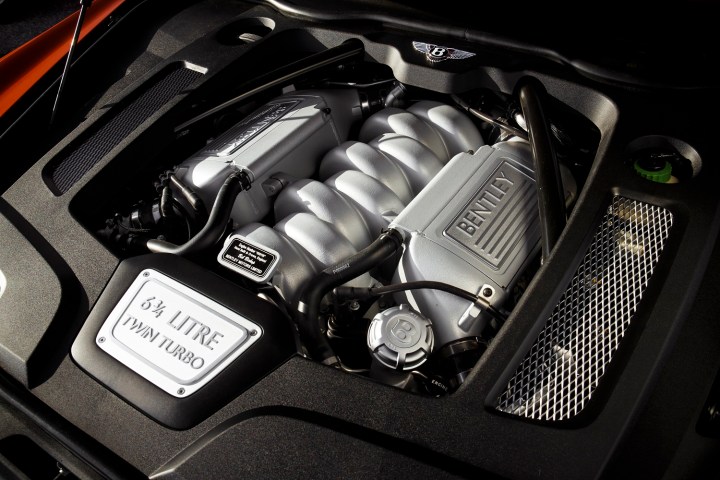
57 years ago, Bentley’s L-Series V8 launched as a 6.2-liter naturally-aspirated unit fed by a pair of carburetors. It initially powered the ultra-luxurious S2, and the equally-opulent Silver Cloud II that was built by sister company Rolls-Royce. The mill gradually evolved into a 6.75-liter — six and three-quarters in Bentley-speak — unit fed by a pair of large turbochargers. Currently, it develops 505 horsepower and 752 pound-feet of torque in its initial state of tune, though buyers who require more grunt can order a tweaked version of it with 530 horses and a mighty 811 pound-feet of twist.
Technology is advancing at a neck-snapping pace. While it’s technically possible to continue spending money on making the eight-cylinder cleaner, more powerful, and more efficient, Bentley boss Wolfgang Dürheimer recently told Car & Driver that the historic V8 has found its “final home” between the front fenders of the current Mulsanne. The next-generation model will adopt a 12-cylinder engine for the first time ever. Whether it will downsize and adopt the same 6.0-liter W12 that’s found under the hood of the Bentayga or use an entirely different engine is anyone’s guess at this point.
Read more: Bentley’s Mulsanne flagship might lose its lid after all
The entire Mulsanne range received major updates inside and out for the 2017 model year, so Bentley’s range-topper and the famous six and three-quarters that powers it aren’t going away any time soon. While details about the next Mulsanne are few and far between, Car & Driver speculates that it’s at least five years away from hitting showrooms.
Editors' Recommendations
- Microsoft might end one of the most annoying GPU wars
- New reports shows increasing GPU supply, signaling end of shortage is nearing
- Bentley’s first electric car could use cutting-edge solid-state batteries
- Bentley EXP 100 GT concept gets its own augmented-reality app
- As end of support nears, Windows 7 users are finally moving to Windows 10




